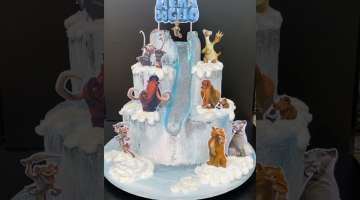Surreal Frozen Lake Michigan Turns Into a Magical Wonderland
With the coming of the winter, the nature began to emerge so beautiful images that will not be true.Therefore, nature and art can be thought of as two concepts fused together. There are unlimited examples of shapes and forms in nature. Nature is a permanent teacher and provides lifelong learning.These images of Lake Michigan are also examples.
- 1 | 8

Lake Michigan is becoming one of the most photogenic lakes when springtime arrives, after a long cold winter influenced by the Polar Vortex. The Polar Vortex is a band of strong winds that keep the Arctic region bitterly cold.Image credits: AP Images
- 2 | 8

The Polar Vortex sometimes reaches areas of North America, bringing freezing temperatures down to record-breaking lows of -30 ° C (-23 ° F) around Lake Michigan. During this peak the waves form hills of ice resulting in ice shelves. Finally when spring arrives, the lake transforms into a majestic heaven by melting ice. The dynamic water underneath the melting ice pushes shelves to the surface and results in a fascinating phenomenon.Image credits: AP Images
- 3 | 8

All Photographers have been capturing photos from this mesmerizing pattern for years. The American coast guards have warned to only admire the magical ice from afar, as melting ice is causing a dangerous surface to walk on.Image credits: AP Images
- 4 | 8

"No ice is safe ice, especially this time of year," said Grant Heffner of the US Coast Guard BMC. "The ice is certainly deteriorating and breaking up."Image credits: AP Images
- 5 | 8

Nowadays almost 12 million people live around the shores of Lake Michigan, mainly in the big cities Chicago and Milwaukee. However, this hasn't always been the case.Image credits: AP Images
- 6 | 8

The first people who came to live in this area were the Hopewell-indians. Their culture diminished around 800 AD when the area mingled with the Late Woodland Indians for the next few hundred years.Image credits: AP Images
- 7 | 8

Lake Michigan is the biggest lake in North-America that lies entirely within the United States. It is part of the five Great Lakes of North-America and it's the second biggest by volume (4,900 km3 or 1,180 cu mi). After Lake Superior and Lake Huron it's the largest by surface area (58,030 km2 or 22,404 sq mi). Image credits: AP Images
- 8 | 8

Don't you think nature is amazing?If you like this article and photos please share on facebook with your family and friends. Image credits: AP Images



















